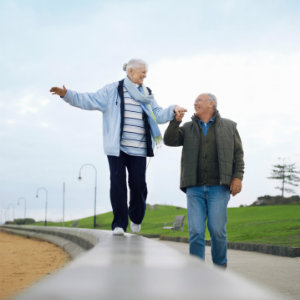You know your body better than anyone else — and that’s the power of the self-exam. It’s important to visit your doctor for regular checkups but, through self-exams, you can discover an impending issue as early as possible and inform your doctor. Here are four simple self-exams for older adults you can conduct at home, starting today.
Eye Self-Exam
For this exam, just look in the mirror. Ideally, you’ll see firm eyelids and even lashes. Ideally, here’s what you won’t see: redness or swelling. AARP notes that, if your inner lid is red or irritated, you should ask your doctor about ectropion. This is an age-related condition where the lower lid droops to the point where the inner surface is visible. This can lead to corneal damage, so discuss treatment with your doctor.
Do you see a bump on your eyelid? Are eyelashes missing? If the bump grows, getting bigger, darker or thicker, have this checked out to make sure it isn’t cancer.
Skin Self-Exam
AARP also shares tips for a skin check, during which you look at and touch your skin and ask a family member to check your back. Although you could look at your back in a mirror, the sense of touch is also important in this process. Ideally, all should look and feel even with no noticeable changes. Carefully look at your face and ears, neck, scalp and back. Are there moles that are new or changing in shape or appearance? If you find moles that are asymmetrical, with uneven color or borders — or moles larger than a pencil eraser — talk to your doctor about melanoma.
Do areas of the skin feel like sandpaper? Small patches of this could be actinic keratosis. Because about 10 percent of these patches turn into skin cancer, alert your doctor. Also look for shiny pink or brown bumps, especially if any have a raised, rolled border. The most common kind of skin cancer, basal cell carcinoma, has this appearance.
For a more detailed explanation of how to check for skin cancer, check out these instructions at SkinCancer.org.
Balance Self-Exam
A good sense of balance is important to prevent falls, which cause more than 2 million emergency room visits by older adults each year. Go4Life, a site by the National Institute on Aging (NIA), provides several balance exercises. In response to how much/how often these exercises should be done, the NIA says,“You can do balance exercises almost anytime, anywhere, and as often as you like. Also try lower-body strength exercises because they can help improve your balance. Do the lower-body strength exercises 2 or more days a week but not on any 2 days in a row.”
Specific balance exercises include:
As you progress with your exercises, continue to challenge yourself. If you find that you are having balance issues, share this information with your doctor.
Heart Rate Self-Exam
A normal resting heart rate ranges from 60 to 100 beats per minute for adults. Mayo Clinic shares how to calculate yours. Note that, if you are super fit, it may be normal for your resting heart rate to be below 60.
If your heart rate rises at work, for example, this may indicate high stress levels. Work stress has been linked to diabetes, obesity and heart disease. Find healthy ways to relieve that stress — which includes exercise — and let your doctor know if the issue continues. If your resting heart rate is higher than 100 beats per minute, inform your doctor. This is known as tachycardia, and can be a sign of cardiac issues. It can also be related to anxiety or alcohol use.
Self-exams are an excellent way to proactively take charge of your health. Talk to your doctor about any others you should be doing regularly.














